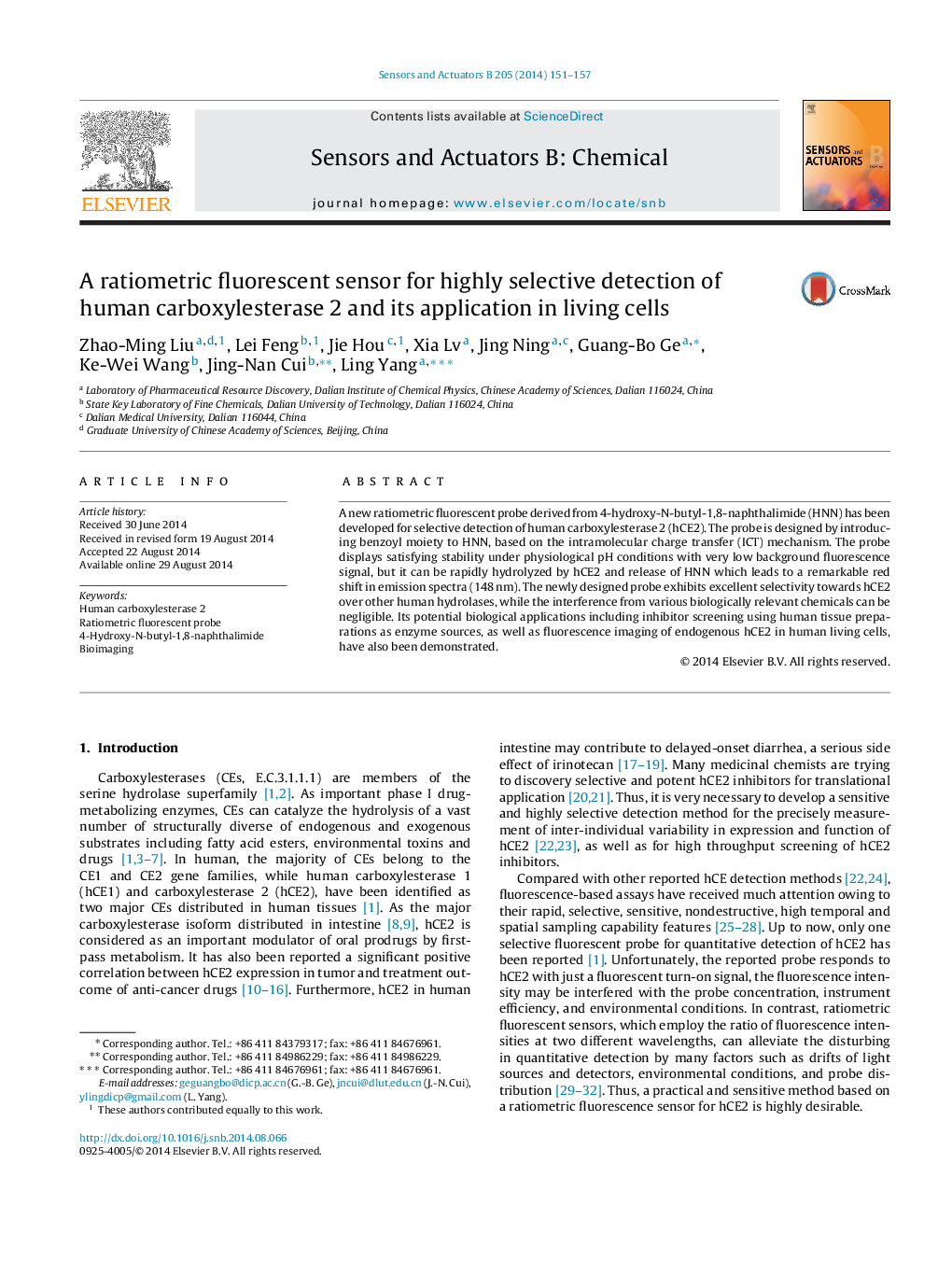| Article ID | Journal | Published Year | Pages | File Type |
|---|---|---|---|---|
| 739887 | Sensors and Actuators B: Chemical | 2014 | 7 Pages |
•A new ratiometric fluorescent sensor was developed for measuring the activity of human carboxylesterase 2 (hCE2).•The sensor displayed excellent selectivity and sensitivity towards hCE2.•The sensor could be selectively hydrolyzed by hCE2 which led to a remarkable red shift in emission spectra.•The sensor was cell membrane permeable and can be used to monitor the activity of hCE2 in living cells.
A new ratiometric fluorescent probe derived from 4-hydroxy-N-butyl-1,8-naphthalimide (HNN) has been developed for selective detection of human carboxylesterase 2 (hCE2). The probe is designed by introducing benzoyl moiety to HNN, based on the intramolecular charge transfer (ICT) mechanism. The probe displays satisfying stability under physiological pH conditions with very low background fluorescence signal, but it can be rapidly hydrolyzed by hCE2 and release of HNN which leads to a remarkable red shift in emission spectra (148 nm). The newly designed probe exhibits excellent selectivity towards hCE2 over other human hydrolases, while the interference from various biologically relevant chemicals can be negligible. Its potential biological applications including inhibitor screening using human tissue preparations as enzyme sources, as well as fluorescence imaging of endogenous hCE2 in human living cells, have also been demonstrated.
Graphical abstractFigure optionsDownload full-size imageDownload as PowerPoint slide
